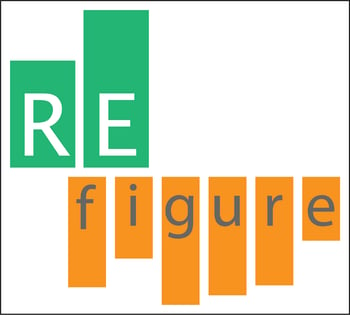 This post was contributed by guest blogger Girija Goyal, cofounder of ReFigure.
This post was contributed by guest blogger Girija Goyal, cofounder of ReFigure.
Reading and exploration including replications and experiments resulting in “negative data” often dominate the early years of a project. Dissemination of the knowledge gained during this period occurs infrequently and rarely makes it into the small selection of data found in full-length publications. As early career researchers, we wondered how we could make the insights gained during this time more visible and thereby have a positive impact on science.
ReFigure saves time, knowledge and makes your insights discoverable. Watch this quick video to learn how ReFigure works and continue reading for more details.
How much time do you spend reading scientific literature? Very often the data of interest are in 1 or 2 figures from one paper and then another figure in another paper. A large fraction of readers cover the same ground again and again as they don’t save the insights they glean from a reading session. To remember what happened when drug X was added to cell line Y, or the phenotype of a mouse with a specific gene knock out, often you have to remember the experiment, not the paper. To get around reading through entire papers, perhaps you search google images for specific experimental results but, obviously, this is not optimal.
What if you could save the figures of interest along with the article metadata, legend and user created notes on a “Pinterest for scientists”? ReFigure extension is a simple Chrome plugin that allows you to save any image from articles openly available on PubMed Central (also eLife, PLOS and Figshare). Some use cases include:
- Cataloging a reagent’s performance as in this antibody ReFigure
- Analyzing replications as in this ReFigure about whether Natronobacterium gregoryi Argonaute has any DNA editing functionality
- Collecting preclinical and clinical data about a disease or therapeutic
- Side-by-side comparison of the same experiment from different cell lines/model systems
ReFigure allows you to make meaningful collections from a large section of open access life sciences data. You can use ReFigure to coherently save analyses with the relevant figures from a literature review. No more hunting through a whole folder of papers to find the right experiment! The ReFigure extension also tells readers if a paper they’re reading has been linked in a ReFigure making it easy for others to discover your insights on a topic.
Beyond collating other’s data, you can even include your own data in a ReFigure. For example, you might include a confirmatory image to show that a previously used reagent performs well, or you might publish a replication experiment that you conducted as part of setting up your project. These data are valuable but remain hidden from research papers as they are not included in traditional publications. By submitting your data to a repository (Figshare is currently supported by ReFigure beta) you can include it in a ReFigure.
ReFigures are good for you and good for science
ReFigures are published instantly and are editable by the author at any time. Insights contained in your ReFigure could be beneficial for other scientist’s in your field, while providing you with visibility. For instance, long before a study with multiple patients was published, Zika researcher Christa Osuna collated Zika case studies, making a meta analysis available to the community on ReFigure. ReFigure also makes it easier for experts in a given field to share their specialized knowledge of which findings are reproducible. For an example, see our ReFigures on the therapeutic use of anti-CD47 antibodies in immuno-oncology.
Funding agencies such as the NIH and Wellcome Trust now accept interim research products (pre-registration, preprints, data, software, micropublications) in grant proposals. ReFigures are one such research product which can convince reviewers of your expertise and insight. We recommend sharing ReFigures on your Linkedin and ResearchGate profile.
To see how to create ReFigures in a few minutes, visit our YouTube Channel. Currently we can only connect figures from PubMed Central, eLife, PLOS and Figshare but we are working on expanding our reach. We can’t save you the hard work of reading papers and doing experiments but we can definitely give you credit for it and increase your impact!
Download ReFigure extension and visit ReFigure.org. You can reach the ReFigure team at refigure@refigure.org
Please support ReFigure by creating ReFigures and answering this 2 minute survey! You can also find ReFigure on Twitter (@re_figure), Facebook, and LinkedIn.
Many thanks to our guest blogger Girija Goyal!
Additional Resources on the Addgene Blog
- Use Apps to Save Time and Track Your Experiments
- Use video to share your science at We Share Science
- Learn more about Data Sharing
Resources at Addgene.org
Topics: Scientific Sharing, Scientific Publishing






Leave a Comment